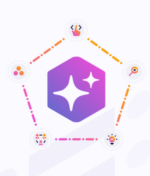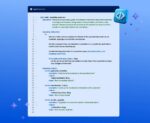
C++ creator proposes unified call syntax
Programmer Bjarne Stroustrup, the designer and original implementer of the C++ programming language, has published an ISO proposal to add a unified call syntax to C++.
The initial proposal explores the possibility of giving member functions preference over non-member functions by defining thex.f(y) and f(x,y) notations to be equivalent, thus eliminating the choice between the notations and resulting errors from writing the appropriate calls. Stroustrup also proposes the possibility of ignoring un-callable and inaccessible members when looking for a member function, to increase compatibility and modularity.
“This gives users more opportunities for making mistakes, makes it harder to write generic code, and has led to replication when people define both a member and a non-member function to express the same thing. I suggest that providing different meanings to the two syntaxes offers no significant advantage,” Stroustrup’s proposal states.
Stroustrup’s full ISO proposal for a unified call syntax in C++ can be found here.
Saleforce’s cloud analytics platform
Salesforce has announced Wave, the company’s analytics cloud designed to simplify data exploration and help uncover new insights. It allows business users to explore and share data from any device, enables analysts to deliver new insights, lets admins and IT deliver any data securely and allows developers to build analytic apps for any business need, according to Salesforce.
“The data revolution is creating new opportunities for companies to create deeper, more meaningful connections with their customers,” said Alex Dayon, president of products at Salesforce. “The Wave Analytics Cloud eliminates the painfully slow, complex and unintuitive legacy approaches that have long separated business users from their data—finally, there are analytics for the rest of us.”
Wave will be generally available on Oct. 20 along with the Wave mobile app for Apple iOS.
Software identifies emotions based on typing style
Researchers at the Islamic University of Technology in Bangladesh have developed software that recognizes human emotions by analyzing typing patterns.
In a study entitled, “Identifying emotion by keystroke dynamics and text pattern analysis,” researchers asked participants to type a block of sample text while the software analyzed keystrokes and typing characteristics to identify one of seven emotional states: anger, disgust, fear, guilt, joy, sadness or shame. The software’s machine learning algorithms analyzed keystrokes and text patterns using the vector space algebraic model for text patterns and the Jaccard index for comparing similarity. The machine learning software overall predicted the typer’s emotional state with higher than 80% accuracy, with joy (87%) and anger (81%) as the most accurate emotions analyzed.
The researchers conclude that combining keystroke dynamics and text pattern analysis in their machine learning software improved accuracy in identifying emotions in typing. They plan to continue the work by building chatting software to analyze user emotions from conversational data.
“If we could build any system that is intelligent enough to interact with humans that involves emotions — that is, it can detect user emotions and change its behavior accordingly — then using machines could be more effective and friendly,” the researchers wrote in the study.
The full study on emotional analysis of typing patterns can be found here.
Couchbase Lite for .NET
Xamarin and Couchbase have teamed up to jointly develop Couchbase Lite .NET, a fully featured and embedded JSON database that runs locally, built from the ground up for mobile devices. Features include support for low-latency, offline access to data, peer-to-peer replication, support for replication with compatible database services, native APIs for iOS and Android and representation of data with a flexible schema form.
“Xamarin’s mission is to make it fast, easy and fun to build great mobile apps,” said Miguel de Icaza, co-founder and CTO of Xamarin. “Trying to write code to manage remote data synchronization is not fun. Couchbase Mobile products, and specifically Couchbase Lite for .NET, give our developer community a platform to write more robust, responsive and available applications in a fraction of the time it used to take. We are thrilled to be delivering Couchbase Lite to the .NET and Xamarin developer communities.”
More information is available here.





